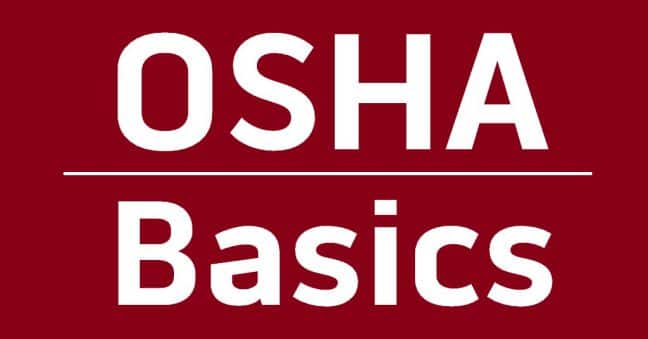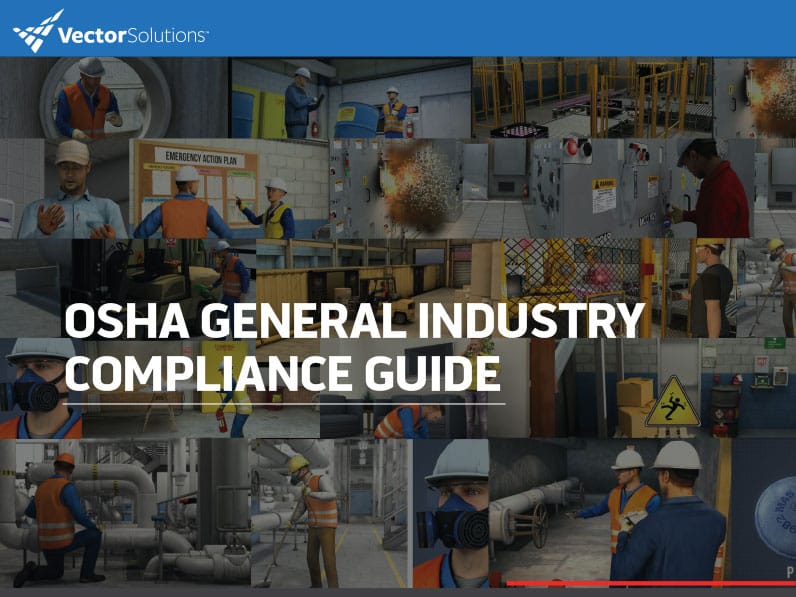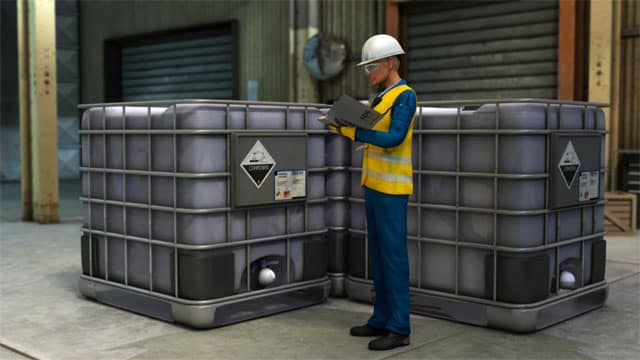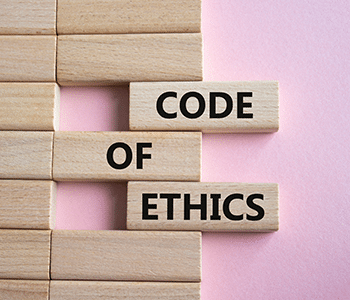June 26, 2018 10 min read
OSHA Basics: The General Duty Clause–5(a)(1)
Industry:
Solution:

In this installment of our OSHA Basics series, we’re going to give you a quick introduction to OSHA’s so-called “General Duty Clause.” The General Duty Clause is found in Section 5 of the OSH Act–5(a)(1), to be exact. And in general terms, it’s OSHA’s requirement that employers provide employees with a safe work environment that’s free of recognized hazards.
You probably know OSHA has many specific safety & health requirements for specific safety and health hazards–things like welding fumes, airborne particulates, and confined spaces, for example. But you can probably also understand that there may be unsafe, hazardous working conditions that aren’t covered by a specific OSHA standard. That’s the situation that OSHA’s General Duty Clause was created to cover–it’s a bit of a safety at work catch-all.
Read on to find out what the General Duty Clause is, how it’s related to an employer’s responsibility for occupational safety and health, and how an OSHA inspector might cite an employer for violating the General Duty Clause.
Plus, feel free to download our free Guide to OSHA General Industry Compliance Guide at any time, and stay tuned for a similar guide for Construction.

Vector EHS Management Software empowers organizations – from global leaders to local businesses – to improve workplace safety and comply with environmental, health, and safety regulations.
Learn more about how our software can save you valuable time and effort in recording, tracking, and analyzing your EHS activities.
Learn more about how we can help:
- Incident Management Software →
- EHS Inspection Software →
- Key Safety Metrics Dashboard →
- Learning Management System (LMS) and Online Training Courses →
- Mobile Risk Communication Platform
Download our EHS Management Software Buyer’s Guide.
OSHA’s General Duty Clause: Employer Responsibilities
Section 5 of the Occupational Safety and Health Act lists responsibilities or duties of employers and employees for occupational safety and health.
Section 5(a) covers the duties of the employer, while Section 5(b) covers the duties of the employee.
In 5(a), the Act lists two responsibilities for the employer. According to 5(a), the employer:
(1) shall furnish to each of his employees employment and a place of employment which are free from recognized hazards that are causing or are likely to cause death or serious physical harm to his employees; (2) shall comply with occupational safety and health standards promulgated under this Act.
It’s 5(a)(1) that’s often referred to as the “General Duty Clause,” and that’s typically interpreted to mean that if an occupational hazard isn’t covered in a specific occupational health and safety standard–as explained in 5(a)(2)–then the employer still has a general duty to “furnish..each…employee employment and a place of employment which are free from recognized hazards that are causing or are likely to cause death or serious physical harm…”
OSHA General Industry Compliance Guide
Compliance guidelines for the OSHA 1910/general industry standards.
Yes! I Want the Guide!
How OSHA Inspectors Cite The General Duty Clause
During an OSHA inspection, the inspector will walk-around the work area and look for hazards.
If the hazard violates a specific OSHA standard (like, for example, there are hazardous chemicals that are not labeled as required by the Hazard Communication standard), the inspector will cite the employer for violating that standard.
However, if there’s a hazard that’s not specifically covered by a standard, the inspector can cite the employer for violating 5(a)(1), the General Duty Clause.
When An OSHA Inspector Will Cite the General Duty Clause During an Inspection
According to this OSHA Letter of Interpretation (LI), general duty provisions are used in inspections:
…only where there are no specific standards applicable to the particular hazard involved; 29 CFR 1910.5(f) expressly provides that an employer who is in compliance with a specific standard shall be deemed to be in compliance with the general duty clause insofar as it applies to hazards covered by the specific standard.
Any recognized hazard created in part by a condition not covered by a standard may be cited under the general duty clause. A hazard is recognized if it is a condition that is (a) of a common knowledge or general recognition in the particular industry in which it occurred, and (b) detectable (1) by means of the senses (sight, smell, touch, and hearing), or (2) is such wide, general recognition as a hazard in the industry that even if it is not detectable by means of the senses, there are generally known and accepted tests for its existence which should are generally known to the employer. In addition, “Voluntary Standards” also meet the preceding criteria for identifying a hazard.
Because of the virtually equivalent language used in Sections 17(k) and 5(a)(1) of the Act, in describing serious and general duty clause violations, respectively, a nonserious citation is not issued for violations based on the general duty clause. Citations based on the general duty clause are limited to alleged serious violations (including willful and/or repeated violations which would otherwise qualify as serious violations, except for their willful or repeated nature).
For further clarification, this OSHA Letter of Interpretation says the following elements are necessary to prove a violation of the General Duty Clause:
- The employer failed to keep the workplace free of a hazard to which employees of that employer were exposed
- The hazard was recognized
- The hazard was causing or was likely to cause death or serious physical harm
- There was a feasible and useful method to correct the hazard
OSHA’s General Duty Clause: The Employee’s Responsibilities
Although most discussion of OSHA’s General Duty clause (understandably) focuses on the employer’s responsibilities–as listed in 5(a)(1)–it’s also worth noting that 5(b) lists the general duty responsibilities of the employees, as quoted below:
Each employee shall comply with occupational safety and health standards and all rules, regulations, and orders issued pursuant to this Act which are applicable to his own actions and conduct.
Conclusion: OSHA’s General Duty Clause & Employer Responsibilities
We hope you found this article on OSHA’s General Duty clause helpful and that you now understand the employer’s responsibilities to provide a workplace that’s free of “recognized hazards” in order to preserve the safety and health of workers.
If this “OSHA Basics” article on OSHA’s General Duty Clause was helpful to you, you may also want to check out some of the following articles.
- OSHA Basics: Letters of Interpretation
- OSHA Basics: OSHA’s Consultation Services
- OSHA Basics: OSHA Directives
- OSHA Basics: OSHA Variances
- OSHA Basics: OSHA’s Vertical and Horizontal Standards
- OSHA Basics: OSHA’s Parts 1910 and 1926
- OSHA Basics: How OSHA Standards are Named and Numbered
- OSHA Basics: Incorporation by Reference (IBR)
- OSHA Basics: The OSHA Field Operations Manual
- OSHA Basics: OSHA’s Small Business Handbook
- OSHA Basics: The General Duty Clause-5.(a)(1)
- OSHA Basics: OSHA’s Special Industry Standards in Subpart R
- OSHA Basics: The OSHA Poster
- OSHA Basics: The Competent Person Role
- OSHA Basics: OSHA Penalties
- OSHA Basics: OSHA’s Yearly Top Ten Lists (Recent Years Overview)
- This three-article series on OSHA General Industry Compliance Requirements
- This three-article series on OSHA Inspections
Let us know if you’ve got a topic you’d like us to explore in our OSHA Basics series. The comments section below awaits you.

















